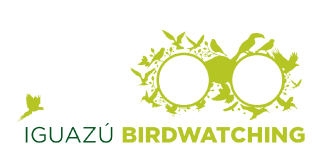Summary:
...
Itinerary:
- Day 1: Upon arrival to Trelew airport drive to Punta Tombo penguin colony, Once we drive of the main highway we will search for Elegant-crested Tinamou, Long-tailed Meadowlark, Patagonian Mockingbird , Chimango Caracara, Rufous-collared Sparrow and Mourning Sierra Finch. Once nearer the penguin colony we surely will spot the Darwin Rhea, maybe even Guanacos on the top of the hills. After a quick visit to the information center we walk into the Magellanic penguin colony. October is the months when eggs are laid, they lay 2 eggs which male and female take turns incubating. Other specialties we hope to find are the endemic White -headed Steamer Duck: Antarctic Skua and Dolphin Gull. Giant Petrels may be flying along the shore, Rock Cormorants and terns such as South American and Royal terns also fly by. Lesser Canastero and Plain-mantled Tit Spinetail can be heard and hopefully seen from the tourist trail. With luck we may find the Scale-throated earth creeper with the decurved bill. Overnight in Gaiman.
- Day 2: Valdes Peninsula . After breakfast, we will depart for Peninsula Valdes. We will be looking for Variable Hawk on the electric line posts, also for another endemic species the Carbonated Sierra Finch that nests where there are creosote bushes. We will also look for Grey-bellied Shrike-Tyrant. and Southern Martin. We may drive until early October along El Doradillo beach where Southern Right Whales can be observed from the coast. Mothers with very young calves use this area to nurse them. High tide is when the come really close to the shore and on calm days you can hear them breathe and emit grunts. We can enjoy our picnic lunch here. Reach Puerto Piramides, to check in for 2 nights at Hosteria Del Nomade. Afternoon whale watching from a boat, the Right whales are slow swimmers, gentle, curious mammals that measure 40 feet and can weigh 40 tons. While watching whales you may see some sea birds such as Snowy Sheathbill, Imperial Cormorant, terns, Neotropical Cormorants, Giant Petrels and Great Grebes. The waters of the Golfo Nuevo are very transparent. We end out day enjoying dinner in this small town where the skies are full of stars.
- Day 3: Valdes Peninsula . We spend the day birding and watching other marine mammals such as Elephant seals, that are in the middle of their breeding season, so you can see black small pups nursing, huge bulls flighting or roaring t each other. At early October even a birth. Orcas sometimes prey on the young ones so you may get lucky and get to see this incredible sight. Southern sea lions congregate in huge noisy colonies. You hope to also find the large endemic rodent locally called “mara” or Patagonian hare. Birds we will look for today include other endemic species the Patagonian Canastero, the Rusty-backed Monjita and the Patagonian Finch. A very difficult species to find are Darwins Nothura, Least Seedsnipe and Tawny-throated Dotterel. It is not an easy task to find all these land birds that are not very colorful in the steppe habitat which is so externes and occupies 90% of Patagonia. Overnight at Puerto Piramides.
- Day 4: drive to Trelew airport, if time permitting do some last minute birding depending on what species we have not found.
Including
Transportation: in four-wheel vehicles
Tickets to National Parks, reserves and the Hummingbird Garden
Accommodation: A mix of wildlife lodges when possible and hotels.
Food: full board.
Iguazu Birdwatching.
.
0000 Street
Misiones, Argentina
info@iguazubirdwatching.com
+54 11 1111 1111
Your message has been sent. Thank you!




